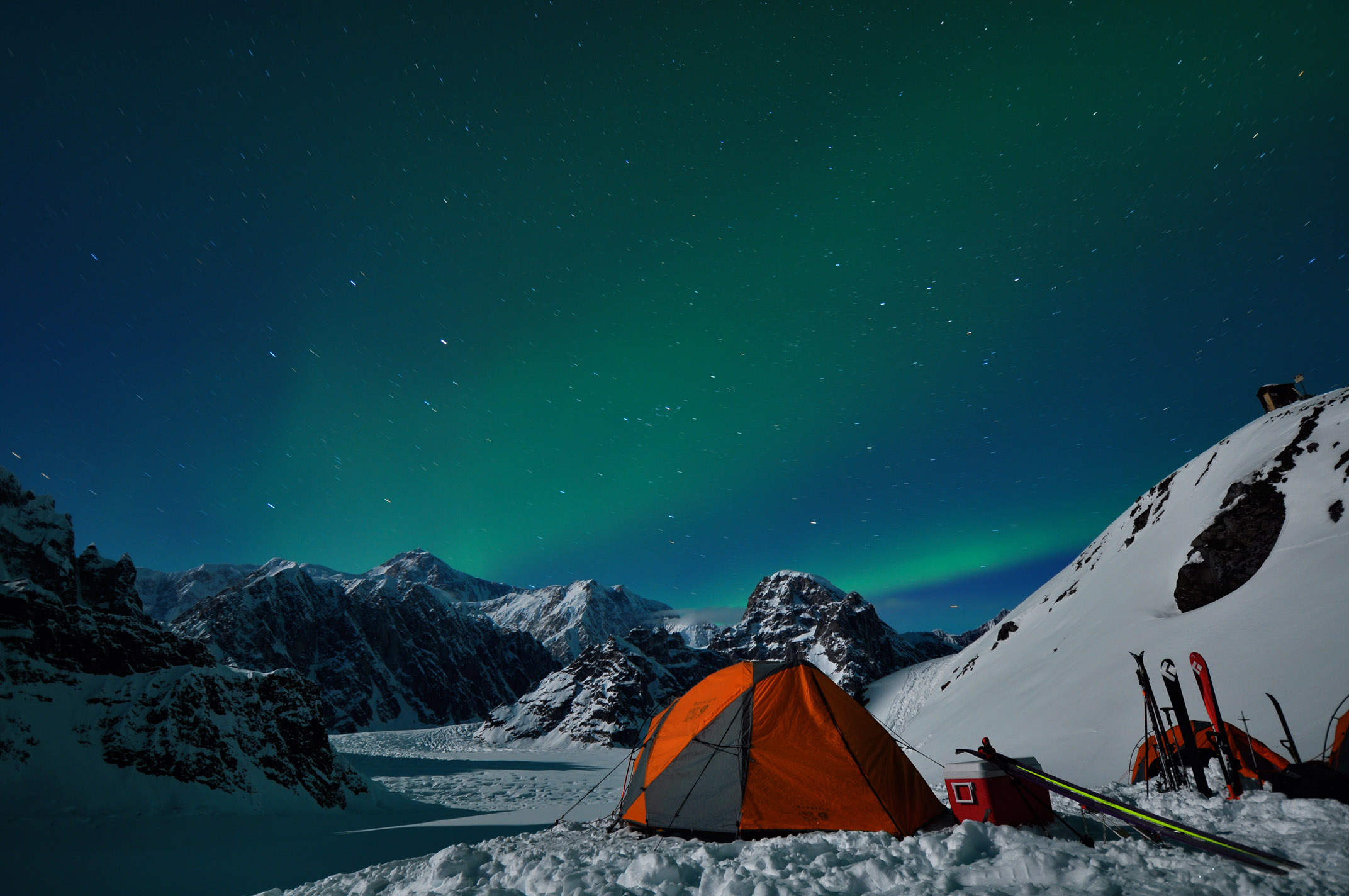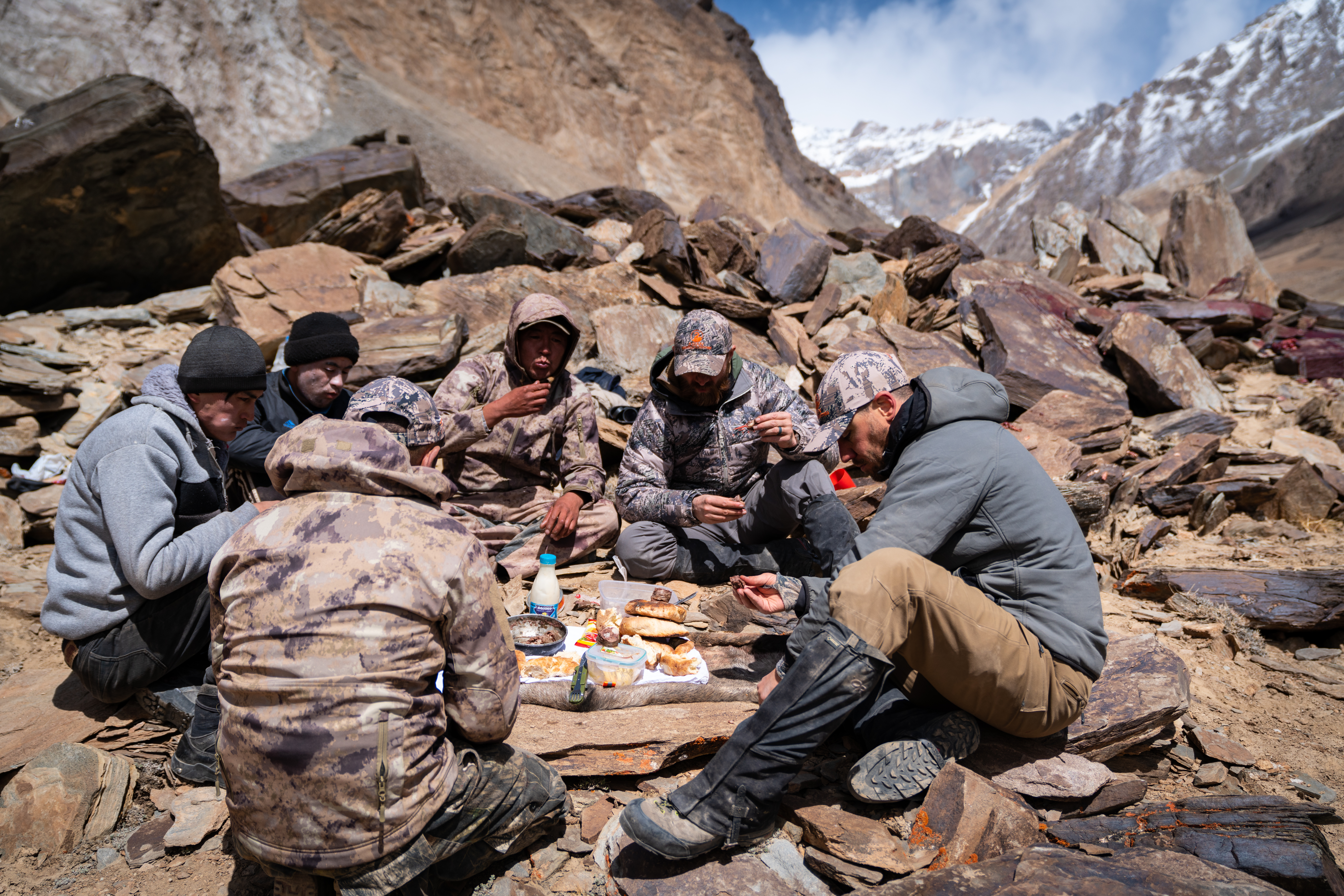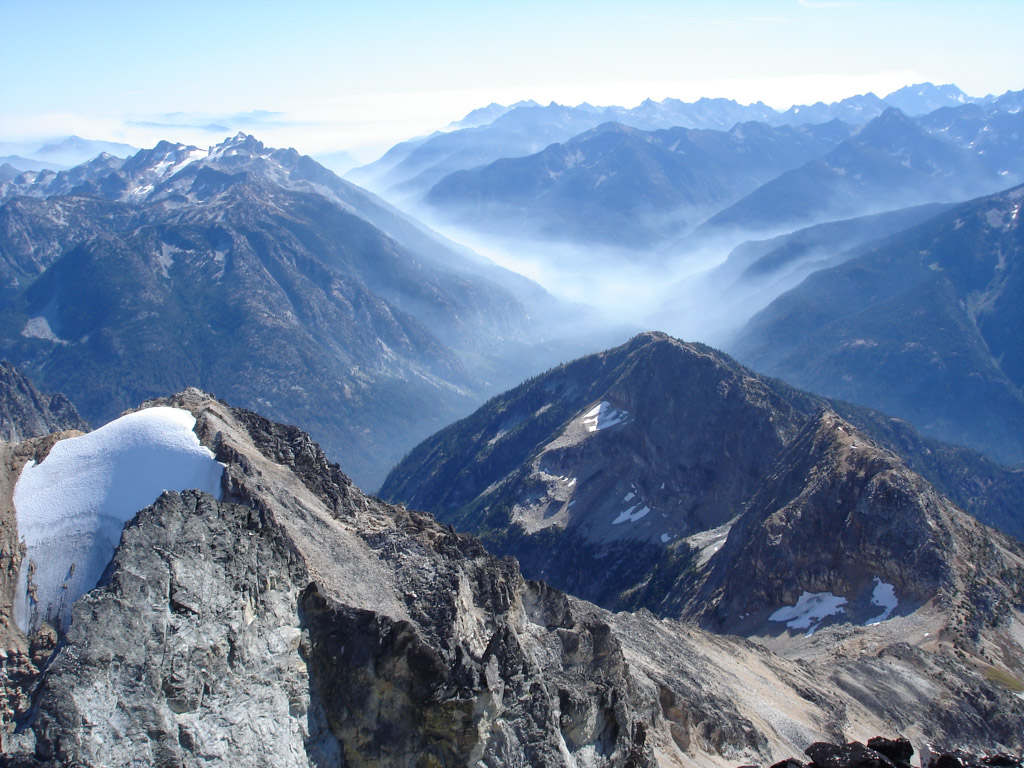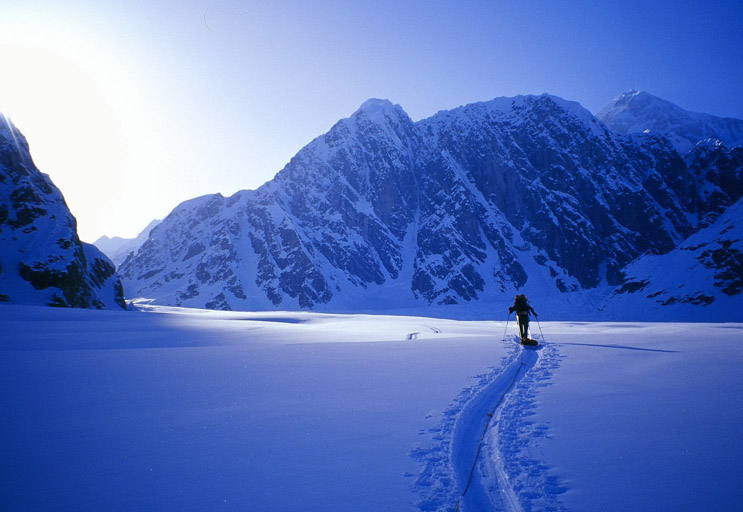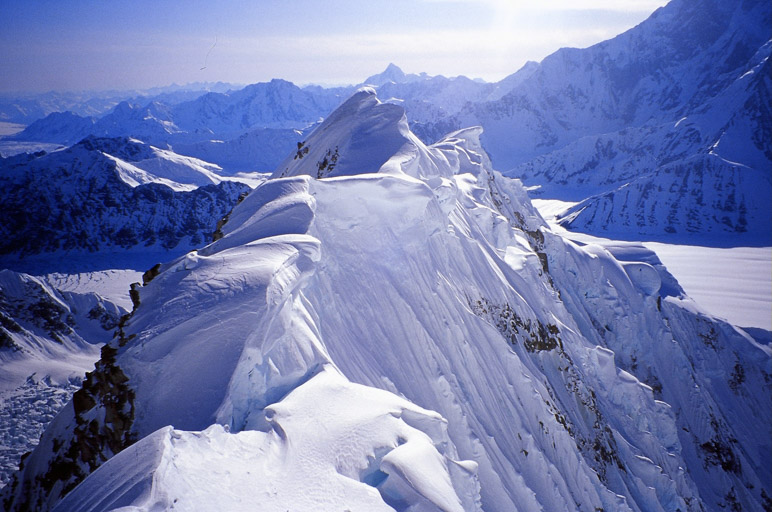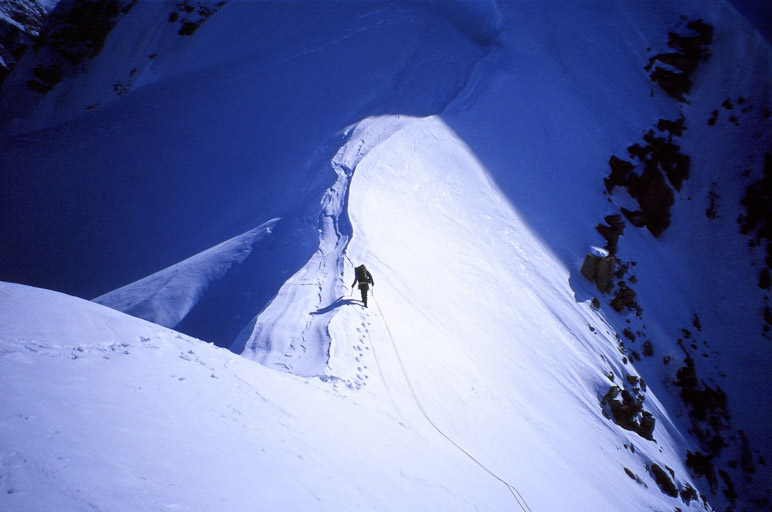Getting a whiff of some rarified air, enjoying some solitude for a change, or catching the view from a narrow ridge or tiny summit are big parts of what makes mountain hunting so special. Life in the high country is unique and rewarding in so many ways. Many are drawn to mountain hunting for the chance to get off the beaten path, away from the crowds, and to challenge themselves in ways that they only can in the rugged ranges of the world. The setting and scenery on most mountains hunts can only be described as spectacular.
As rewarding as these alpine environments can be, the rewards come at a cost. There are many ways that things can go wrong in the mountains, and even if things go exactly right, you are probably going to endure some hardships and suffering along the way. Extreme weather and technical, high-consequence terrain can present significant hazards to your health. Another environmental factor that many hunters and outdoor enthusiasts rarely stop to consider is altitude.
With Adam and the JOMH team fresh off a trip to the high alpine in Tajikistan, we thought now would be a great time to explore some considerations for traveling in and living at “high altitude.”
So what exactly is high altitude? Perhaps trying to define that term is a good place to start. Though there is no one universal standard or globally recognized elevation that correlates to this term, most in the mountaineering world generally define “high altitude” as an altitude where one might be at risk for “altitude illness.” I will define several types of altitude illness shortly. The lowest documented cases of altitude illness have occurred at around 8,000 feet. Instances of altitude illness are exceptionally rare below 14,000 feet. I tend to think of high altitude as an altitude at which altitude illness is more likely than not without proper acclimatization. In the twenty years I spent in the mountain guiding and climbing world, I came to think of high altitude as altitudes above 14,000 feet. In my experience, without proper acclimatization, more often than not people develop signs and symptoms of altitude illness at and certainly above this elevation.
Most people that live at or near sea level will start to feel some of the effects of lower atmospheric pressure (high altitude) at about 5,000 feet. This typically manifests as elevated heart and respiratory rates as compared to norms at lower elevations, both resting rates and during exercise. Pop quiz. How much oxygen is in the air at sea level as compared to say, for the sake of a round number, 10,000 feet? Before you dig in the scientific journals, it is a trick question. Air, the atmosphere around us, is 21% oxygen at sea level and at the top of Everest at over 29,000-feet. So why is it so much harder to breathe adequately at higher altitudes? The answer is pressure and the relative availability of oxygen molecules. The atmospheric pressure is much higher sea level that it is as higher elevations. Higher pressure means air that is more dense or compacted. This means, in laymen’s terms, that though the air around still contains 21% oxygen at higher elevations, we get fewer molecules of O2 with each breath because the O2 molecules are more spread out as a result of the lower atmospheric pressure. Lower pressure also has ties to the physiologic root causes of one form of altitude illness, in particular, HAPE, due to its effects on the pulmonary artery, but that relationship is not yet well understood and I’m getting ahead of myself for now.
Altitude illness epidemiology is fascinating and constantly evolving as science and our understanding evolve and progress. For the sake of this conversation, all we need to know is that as we gain altitude, we get less oxygen with each breath and eventually, with the right combination of factors, that can become very problematic.
As we gain elevation, our bodies naturally respond to this change in available oxygen by breathing more, ramping up our heart rate, and by building more red blood cells. This process of adapting to less available oxygen in the environment is referred to as acclimatization. The simple version of what happens is our heart and respiratory rates increase to compensate for our inadequate carrying capacity for and access to O2 until our bodies can build enough new red blood cells — red blood cells contain hemoglobin, hemoglobin carries oxygen — so that our carrying capacity for oxygen is suitable for the environment around us. When that happens our breathing and beating chill out a bit, close to “normal” back home. Remarkable machine our bodies are. This having been said, even after “properly” acclimating, our bodies are still making do with significantly less O2 in our bloodstream than we are used to at our home elevation. This has obvious effects on things like physical and mental performance even in the best-case scenario.
It should go without saying, but the process of acclimatizing takes time, and no two bodies are the same. Many things affect how well our bodies are able to acclimate. Hydration, fatigue, illness, nutrition, fitness level, etc. I will discuss acclimatization in detail in the paragraphs that follow. First, a quick overview of the categories and types of altitude illnesses.
Altitude Illness
The cost of improper or inadequate acclimatization can be altitude illness. Altitude Illness comes in a few flavors. The medical world recognizes three forms of altitude illness:
- Acute Mountain Sickness, AMS
- High Altitude Pulmonary Edema, HAPE
- High Altitude Cerebral Edema, HACE
AMS is often broken down as mild, moderate, and severe. Edema is the collection of fluid in a body cavity. Once fluid collecting in your noggin starts to compress your brain to the point that you show signs of impaired motor function and changes in your mental status/level of consciousness, you have HACE. When your lungs begin to fill with fluid, you have HAPE.
Altitude illness is always a progression. Generally speaking, altitude illness isn’t really a concern until you are at or above 8000-feet, and even at that elevation, cases of Acute Mountain Sickness (AMS) are extremely rare. At or below this level even un-acclimated bodies are usually able to grab enough oxygen to generally get by without getting sick but don’t plan to be charging uphill with a big pack on at the same pace you would be at home. AMS may begin with a headache, fatigue, dizziness, and other similar symptoms. Typically, people feel pretty sluggish and tired, and unfortunately, sleep may be hard to come by, another one of nature’s many cruel jokes. AMS progresses from mild to more severe a stronger and more persistent headache, nausea and vomiting, and ataxia (clumsiness). In essence, you feel like crap because there isn’t enough O2 in your blood. Below 10,000 feet, AMS rarely progresses to HAPE or HACE and most people tend to perk up after a day or two of feeling poorly if they stay at the same altitude, eat, drink and rest or better yet, drop elevation.
At or above 10,000 feet AMS is much more common and it can progress to HAPE or HACE, both of which are very serious, life-threatening conditions. Being able to recognize when AMS is progressing to HAPE or HACE is important, however, if you have hung around at altitude long enough to have to wonder if your AMS might be turning into HAPE or HACE, you have already screwed up.
The progression from AMS to HAPE often begins with a dry cough that eventually becomes wet, producing a pink frothy substance often referred to as sputum. Rales — a crackling sounds in the lungs — can be heard during inspiration and/or exhalation. Without going into too much detail on the physiology and causes, the capillaries in your lungs start leaking, your lungs fill with fluid, and you can’t breathe, which exacerbates the whole “lack of oxygen in your blood” problem. Ataxia and fatigue become more severe and the stricken struggle for each breath, can’t lay down and are overwhelmed by any sort of physical activity.
AMS has turned into HACE when the fluid surrounding your brain has increased to the point that is has compressed your brain, impairing it’s proper function, making things like walking, talking, and eventually basic life support systems impossible to maintain. In other words extreme ataxia and an altered level of consciousness.
The eventual outcome of untreated HAPE and HACE is death. These things can both progress quickly, typically hours rather than days.
Awareness and Prevention
In the eleven years I led trips on Denali at 20,320’, I had the chance to see the effects of truly high altitude on thousands of people, and there are definitely a few simple things you can do to help set yourself up for success with regard to adequate acclimatization.
Altitude illness, in as simple of terms as I can muster, results from going too high too quickly. That is really it. In my opinion, a conservative approach is always the best bet. I have seen firsthand, too many times to count, the unfortunate consequences of pushing too high too fast.
For the unacclimated, when approaching moderate and high altitudes, start slowly. I know it is hard to force a slow pace at the outset of a highly anticipated hunt or outdoor adventure, but if you crawl first, running will be a lot easier later in the trip. In the context of a typical mountain hunt here in North America, with peak elevations between 10,000 feet and 13,000 feet, if you can spend a night or two an “intermediate” elevation on your way to the high country, this will allow your body to begin the compensatory process without being under too much stress. The altitude at which you sleep is more significant than the altitude that you hike to on any given day. The tried and true adage in the mountaineering world is “climb high, sleep low.”
If your target “high camp” is at 10K or close to it, spend a night or two between 5,00 and 7,500 feet and try to be moderately active during these days. Eat, sleep, and rest as well as you are able. This is a conservative approach as plenty of people just blast right up and do fine, but why not take the time if you have it. I have definitely seen a number of folks go from at or near sea level to sleeping at 10K on their first night and get sick. This is usually mild AMS that resolves in a day or two, but I would rather spend those two days lower down acclimatizing rather than up high feeling like crap while trying to go hunting. I feel like I have seen the following scenario play out a number of times, including having experienced it personally. A lowlander goes from at or near sea level to 10,000 feet on day one and sleeps. The next day they hike around at slightly higher elevations (12,000-13,000 feet), get tired and dehydrated, and sleep at 10,000 feet or higher if they have moved up to a higher camp on day two. On day three, more severe AMS comes knocking and rocks their world.
Altitude is the great equalizer. Previous experience at altitude and/or physical fitness matter very little with regard to how well you will acclimatize the next time you get high. Every exposure is different and your body may or may not succeed in compensating. That said, the more times you go through the acclimatization process, the more you will become familiar with how your body adapts which will allow you to keep better tabs on how you are doing, and hopefully allow you to address potential problems before they arise.
I do think there is a slight correlation between a high level of physical fitness and acclimatization and that correlation is this, the better shape you are in, the less stress there will be on your body, which will allow it to focus on acclimatizing rather than healing and recovering from the day’s activities. That having been said, most of the dozens of patients I have evacuated with serious altitude illness were highly fit at the time of their climb. Being in good shape has little to do with how well your body can and will adapt to altitude, but it doesn’t hurt. There are ways that being highly fit can work against you though as well. Overconfidence in one’s physical fitness — you know who you are — can often lead to people pushing too high too fast, which can lead to big trouble. So listen up you barrel-chested, freedom fighting, CrossFit champ, ultra-marathoners, no one is immune to altitude illness.
A lack of or restless sleep is more common than not at altitude, especially for the first night or two at a higher elevation. Our autonomic respiratory rates are programmed for our oxygen needs at whatever elevation our bodies are used to sleeping at. During the day, our need for oxygen increases and decreases based on our activity level and we breathe accordingly. While we may be shorter of breath than we are used to during a given activity at moderate altitude, our bodies are still ramping up respiratory rates to get the O2 we need during the day. At night it is different though as we go into autopilot mode while we sleep. Our bodies want to breathe as though they are still at their home elevations even though we are now in lower atmospheric pressure. While sleeping (or trying to sleep rather), many people experience periodic breathing, also called sleep apnea and/or Cheyne-Stokes syndrome at higher elevations. Basically, our autonomic breathing isn’t adequate and we wake up a lot, generally gasping for breath. Sounds like fun eh.
Hydration and fatigue both play a role in how well we acclimatize. If you are tired and dehydrated it is a lot harder for your body to do what it needs to do, ramp up compensatory mechanisms. Stay active for your first few days, but don’t run yourself into the ground too early and you will set the stage for a successful acclimatization process. I am a big fan of “active rest” during my first day or two at a new, higher elevation. That is to stay up and moving and keep your body working, but avoid fatigue and a high level of exertion when possible.
Another good rule of thumb is to avoid gaining more than about 1,000 feet per day when it comes to sleeping elevation. In other words, if you are planning to move camp from 10,000 feet to 13,000 feet, make sure you have had 2-3 successful nights sleeping at 10,000 feet before you bump camp up a few thousand feet. Ideally while at 10,000 feet you would have been “climbing high” during the day then “sleeping low” back at camp.
Treatment
Go down, go down, go down, go down. Any questions? Fixing altitude illness is really — but rarely — that simple.
First, recognize the signs and symptoms of AMS early. If you have a headache, dizziness, high level of perceived fatigue, malaise, etc. go down ASAP. Dropping out for a day or two and coming back up is the best fix for AMS. Hanging at a given altitude hoping to feel better and/or going higher is what can lead from AMS to HAPE/HACE. The edemas are rare for people sleeping below 14,000 feet, but not unheard of. Severe AMS is probably the most significant concern, and a bad bout can definitely be a show- stopper.
If you have failed to read the warning signs and find yourself on the highway HAPE or HACE, things have gone from bad to very serious. Time for some better living through pharmaceuticals. I offer the following laymen’s advice with a very important note, these drugs are life-saving interventions meant to be used to facilitate a SUCCESSFUL DECENT only. These drugs should not be used to try to enable a continued stay at an altitude that has made you sick, and/or a continued ascent. There are many reasons I preach and practice this philosophy as a hard and fast rule that I will not elaborate on, but I will share one. The more of these drugs that you take, the less your body responds to them, so when the drugs stop working and if you have not descended, your illness will progress and you will likely die.
One possible exception to this standard, that drugs are for going down, is Diamox (acetazolamide). This prescription drug is commonly used prophylactically to aid in the acclimatization process. Rather than discuss how Diamox shortens the oxygen-hemoglobin dissociation curve and stimulates pulmonary ventilation by inhibiting the production carbonic anhydrase in the kidneys resulting in a metabolic acidosis, the important thing to know is that Diamox makes you breathe more. As such, it aids the acclimatization process by helping stave off AMS symptoms while your body compensates. It is a great drug, but it does have some side effects that are legitimate concerns for people engaged in any sort of high output activity like climbing, mountain hunting etc. Diamox is a diuretic, which is a big concern when it comes to hydration and rest — it is hard to sleep when you have to get up and pee ten times a night — both of which are important for an acclimatizing body. The dose that your doc will likely recommend is one 500mg tablet twice a day, which is a huge dose. Several studies that focused on the Diamox-AMS interaction have indicated that half or even a quarter of a tablet one time a day provides essentially the same benefit as the full dose when it comes to AMS, but with greatly reduced side effects.
My personal philosophy regarding drugs is that I use them to treat symptoms as they occur rather than prophylactically. Having a bit of Diamox along in case you start feeling like crap on your first night at higher altitude is not a bad idea. It can be very helpful to ease initial symptoms and to get a good night’s rest on your first night up high.
On to the more serious stuff. Dexamethasone and Nifedipine, both prescription meds, are potentially life-saving interventions for HACE and HAPE respectively. Again, these are used to treat symptoms and to facilitate immediate descent in what should be considered an emergency. These drugs should be considered in med kits for those planning to spend extended times at altitudes above 14,000 feet. Talk to your doc about the details and make sure you are squared away on how to administer these drugs if you plan to spend extended time at higher elevations, something more common on international trips than here in North America. Direct, high flow oxygen is also a treatment of choice, but that is rarely an option on any sort of remote and/or backpack hunt.
As I mentioned above, good quality shut-eye can be hard to come by at higher altitudes. Taking sleep aids to try to get your much-needed rest can be tempting. One major word of caution regarding sleep aids, many common sleep aids and drugs that include “PM” in the title include ingredients that are RESPIRATORY DEPRESSANTS! Taking sleep aids to combat the effects of altitude can actually compound the problem by suppressing your respiratory drive and further contributing to the source of the problem, a lack of O2 in your bloodstream. These sleep aids do the exact opposite of what your body is trying to do and what it needs to do, ramp up your breathing and blood flow. If you plan to take a sleep aid at altitude, talk to your doc and make sure your drug of choice doesn’t contain a respiratory depressant.
More bad news, alcohol is a very significant respiratory depressant. Watch out for the camp cocktails above 10,000 feet or you might be putting yourself at risk for more than just a simple hangover.
At this point, I know someone reading this article is thinking back on a personal experience or maybe a story from someone they know that didn’t pay any attention to acclimatization, blasted up above 10,000 feet from sea level, and didn’t have any issues whatsoever. Superman or superwoman right? Probably not. Thousands of people that live at or near sea level climb 14,000-foot peaks on two or three-day itineraries without getting super sick. How is this possible when people get sick and die at elevations as low as 10,000 feet? The answer is simple though perhaps not intuitive. Two or three highly active days (one or two nights) at 10,000 to 14,000 feet is not usually enough exposure to get very sick. Most of if not all of these people suffer from what could be considered mild or even moderate AMS, but because they move up and down so quickly while breathing hard from physical exertion for most of the time, they don’t have time to develop full-blown AMS or edema. If superman or woman were to be totally honest, they would probably have reported feeling a little crappy, breathing hard, moving slowly, etc. but only one or two nights at a moderate elevation usually isn’t enough to get totally blown up. Many people count this as “successful acclimatization” which is a dangerous mindset, misunderstanding, or perhaps more accurately a non-event feedback loop. The progression from AMS to altitude illness does take time, which is why it is so important to catch it and deal with it early before it is too late.
Summary
Again, in the context of a typical “North American mountain hunt” at or above 10,000 feet, what I would call a moderate elevation mountain hunt, I’d recommend the following:
1) Don’t go too high too fast. Spend a day or two at intermediate elevations before you sleep at your higher elevation camp. If you plan to go up from there, don’t sleep more than 1000 feet higher per day, that is don’t sleep at 12,000 feet until you’ve spent at least two nights at 10,000, etc.
2) Remain moderately active for your few days as you gain elevation and avoid any monster days, significant fatigue, and dehydration for your first couple of days.
3) If you start to get sick, descend two or three thousand feet immediately, spend another day or two lower down, and come back up when you feel better.
4) Have drugs and know how to use them. Make sure your partners have and know the same.
5) Be honest with yourself and your partner(s) about how you are all feeling and don’t suffer in silence. It can be hard to accurately self-assess when you feel bad and dudes, in particular, don’t want to be “that guy” who slows the rest of the team down.
All of the illnesses described above start as relatively slow progressions and are easily solved early on. A daily self/team assessment and ongoing communication is key to maintain a good group dynamic and to keep tabs on each other.
If you plan to travel to the bigger mountain ranges of the world in search of high mountain critters like Marco Polo, Ibex, etc., follow some sort of carefully crafted acclimatization itinerary that will allow you to move to higher elevations gradually over the course of several days at progressively higher altitudes. Talk to your guide, outfitter, or local contact to try to get a handle on your itinerary and the elevation of the places you will be traveling, camping, sleeping, etc. If something seems too ambitious with regard to acclimatization, it is. Don’t gain more than 3,000 feet at a time above 14K if you can help it, especially early in the trip. An ounce of prevention is worth ten pounds of cure in the mountains.
In closing, if you plan to travel at altitude, please equip yourself with the knowledge and supplies to treat altitude illness and other injuries and illnesses should you or one of your teammates wind up sick or hurt. Doing so could save a life.
Good luck and enjoy the high country.


